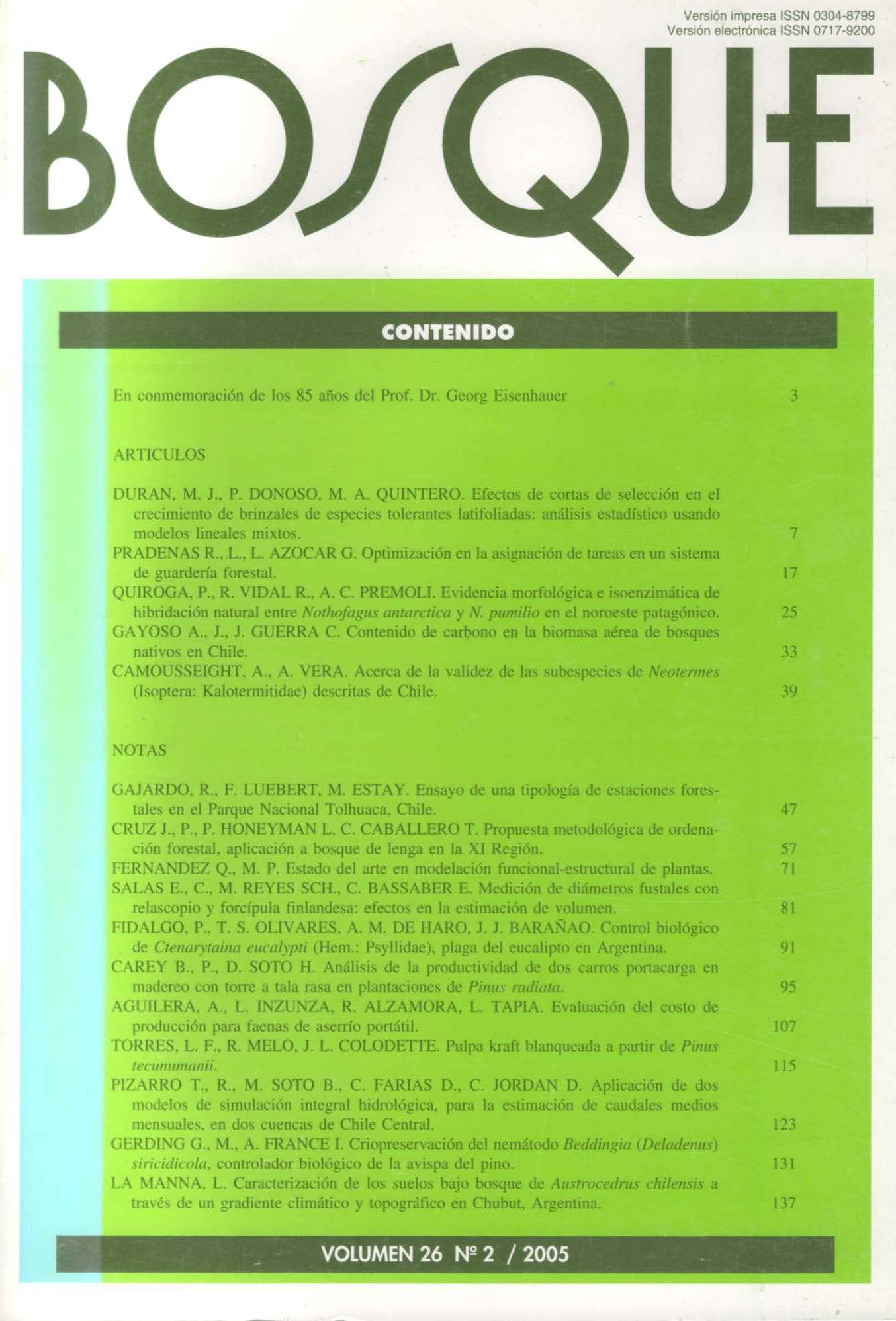Main Article Content
Aug 31, 2005
Abstract
A statistical analysis by repeated measures was applied to determine height growth patterns of Acer Saccharum Marsh and Fagus grandifolia Ehrh (both shade-tolerant species) growing in a northern hardwood stand under the selection cuttings in North America. The influence of two factors or treatments on height growth was studied: period living under the selection system, also called liberation period, and time elapsed after the first cutting. The methodology used to analyze the data included a General Linear Mixed Model, modeling the covariance matrix. The covariance matrix that best fits the data corresponds to the first order autoregressive structure (AR1). It was demonstrated that the release period and the time after the first cutting significantly affected height growth of trees. The analysis showed that for trees with a liberation period greater than 80 % height growth was significantly higher following the first selection cutting. These results support the effectiveness of the selection system on increasing height growth of young trees. Also, these results recommend a cutting cycle of 15 yrs or less in northern hardwoods under similar conditions to those of this stand.


